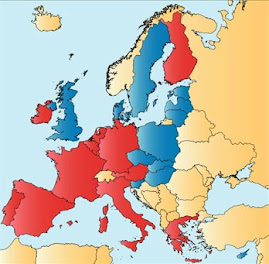Women outside the labour force in 2006 One woman in ten aged 25-54 in the EU27 is inactive due to family responsibilities Large variations between Member States
The inactivity rate1 of women aged between 25 and 54 years was 23.6% in 2006 in the EU27, compared with 8.1% for men. This period is the main working age, and also the age when families are founded and children are raised. The main single reason for prime-aged women to be outside the labour force is therefore family responsibilities2. Among prime-aged women in the EU27 in 2006, 10.2% stated they were inactive due to family responsibilities, almost half of all inactive women of this age.
These data come from a report3 issued by Eurostat, the Statistical Office of the European Communities, focusing on people outside the labour force.
Between 2% of prime-aged women in the United Kingdom, Sweden and Denmark and 46% in Malta inactive due to family responsibilities
In the EU27 in 2006, the lowest inactivity rates for women aged 25-54 were found in Slovenia (13.0%), Sweden (13.7%), Estonia (14.3%), Denmark and Finland (14.6%), while Malta (58.9%), Italy (35.7%), Greece (30.9%) and Ireland (29.5%) had the highest.
Among prime-aged women, the percentage inactive due to family responsibilities varied greatly between Member States: the United Kingdom (1.9%) had the lowest percentage, followed by Sweden (2.1%) and Denmark (2.3%). At the other end of the scale, Malta (45.9%), followed by Ireland (23.1%) and Luxembourg (21.7%) had the highest rates.
Around 60% of young women outside the labour force
Education and retirement explain the higher inactivity rates observed at either end of the age scale. For women aged 15-24, the inactivity rate was 59.4% in the EU27, compared with 52.5% for men. Female inactivity rates within this age group ranged from 30.7% in Denmark, 31.6% in the Netherlands and 39.2% in Finland to 76.9% in Lithuania, 76.6% in Hungary and 75.0% in Luxembourg.
For women aged 55-64, the rate was 62.9% in the EU27 in 2006, compared with 43.8% for men. The lowest rates were recorded in Sweden (30.4%), Estonia (39.5%) and Finland (42.8%) and the highest in Malta (88.4%), Poland (79.7%) and Slovakia (79.1%).



